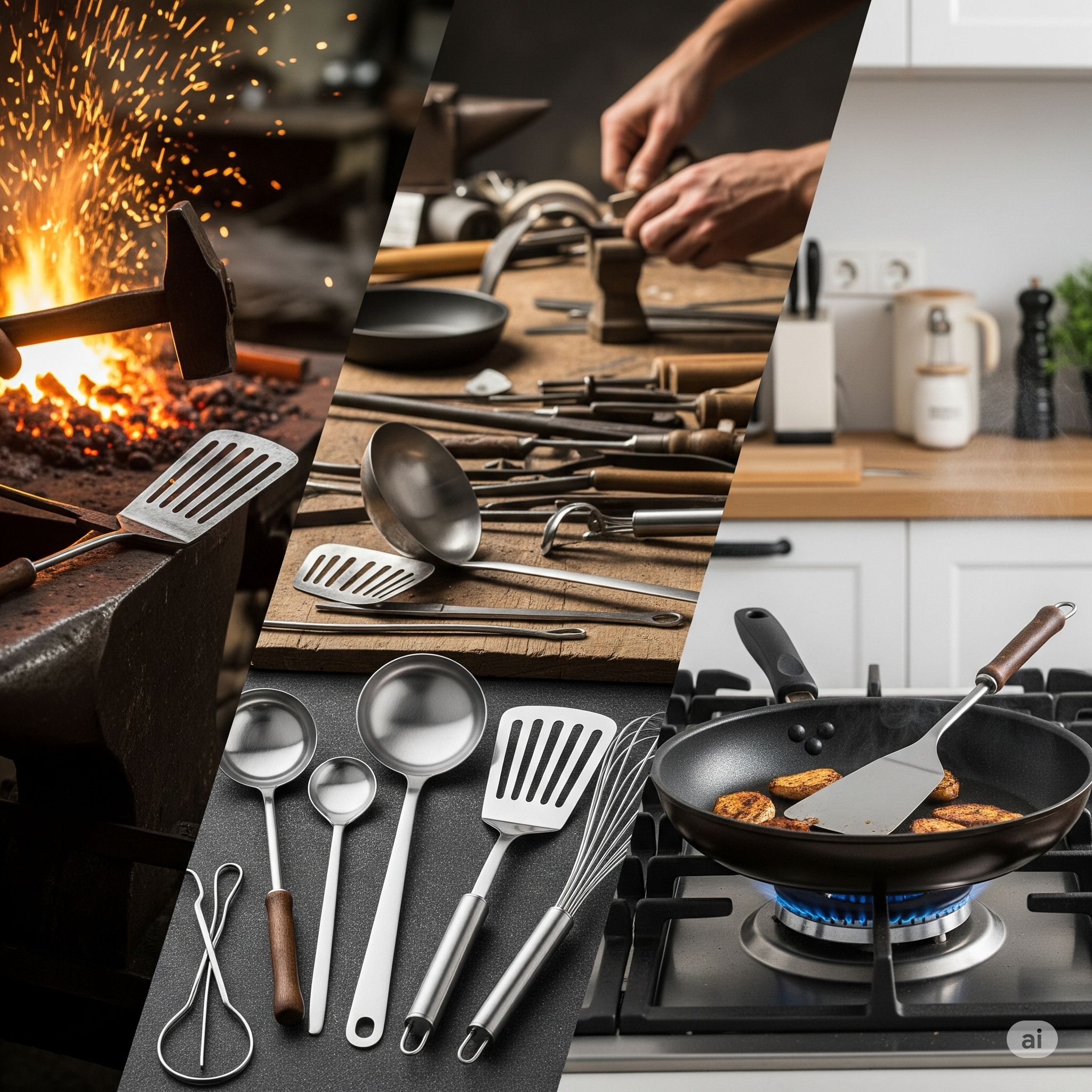Introduction: The Power of Materials
Throughout history, the evolution of kitchenware has been driven by the discovery and mastery of new materials. Each breakthrough—from ancient clay to modern silicone—has transformed the way we cook, eat, and design our kitchens. These materials not only improved durability and performance but also inspired new culinary techniques and traditions. In this blog, we explore five materials that changed kitchenware forever, shaping the tools we use and the meals we create. Their stories are woven into the fabric of every kitchen, reminding us that innovation and tradition go hand in hand in the heart of the home.
1. Clay: The Ancient Foundation
Clay was one of the first materials used to make kitchenware, dating back thousands of years. Its natural abundance and malleability allowed early civilizations to craft pots, bowls, and storage jars. Clay cookware excels at slow, even heating, making it ideal for stews, soups, and breads. The porous nature of clay enhances flavors and retains moisture, resulting in tender, aromatic dishes. From Roman amphorae to Indian handi pots, clay’s influence spans continents and cultures. Even today, traditional clay cookware is prized for its ability to create rich, authentic flavors, connecting us to the roots of culinary history.
2. Iron: The Age of Strength
The introduction of iron revolutionized kitchenware, bringing unmatched strength and versatility. Iron pots, pans, and cauldrons could withstand high heat and open flames, making them indispensable for both home cooks and professional chefs. Cast iron, in particular, became a staple for its durability and ability to retain and distribute heat evenly. These qualities made iron cookware perfect for frying, baking, and roasting. Over time, iron tools became family heirlooms, passed down through generations. The legacy of iron endures in today’s kitchens, where cast iron skillets and Dutch ovens remain beloved for their performance and timeless appeal.
3. Stainless Steel: The Modern Marvel
Stainless steel transformed kitchenware in the 20th century, offering a combination of strength, hygiene, and sleek aesthetics. Unlike iron, stainless steel resists rust and corrosion, making it ideal for everyday use. Its non-reactive surface preserves the taste and color of food, while its durability ensures a long lifespan. Stainless steel cookware is easy to clean, compatible with all heat sources, and often features layered construction for optimal heat distribution. From saucepans to cutlery, stainless steel is a symbol of modern kitchens—blending functionality with style and setting the standard for quality and innovation in culinary tools.
4. Non-Stick Coatings: The Easy Revolution
The invention of non-stick coatings, such as Teflon, brought a new level of convenience to cooking. Non-stick pans require less oil, making meals healthier and cleanup easier. These coatings prevent food from sticking, allowing for delicate dishes like omelets and pancakes to be prepared with ease. While early non-stick materials had limitations, modern advancements have improved their safety and durability. Non-stick cookware is now a kitchen staple, valued for its practicality and time-saving benefits. This innovation has changed the way we cook daily meals, making home cooking more accessible and enjoyable for everyone.
5. Silicone & Plastics: The Flexible Future
Silicone and plastics have ushered in a new era of kitchenware, offering flexibility, color, and creativity. Silicone is heat-resistant, non-toxic, and perfect for baking mats, spatulas, and molds. Plastics, when used safely, provide lightweight, affordable options for storage and utensils. These materials can be shaped into virtually any form, inspiring innovative designs and vibrant kitchen accessories. Their ease of use and maintenance have made them favorites in busy households. As technology advances, eco-friendly and biodegradable options are emerging, ensuring that silicone and plastics will continue to shape the future of kitchenware in sustainable ways.
